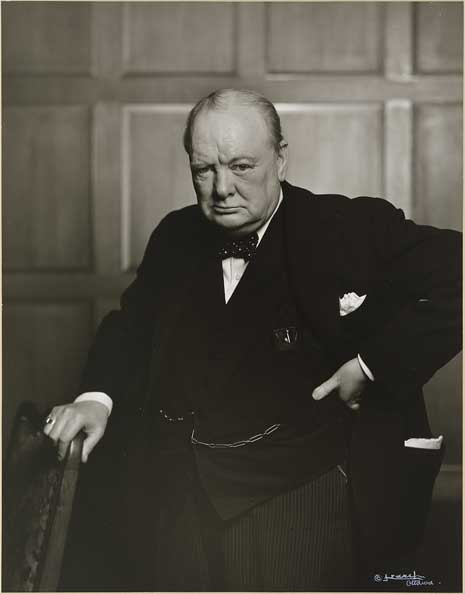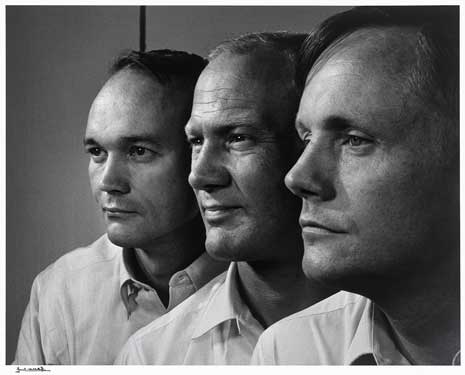Tales of a Historic Career: Yousuf Karsh

Yousuf Karsh was a patient photographer. He took his time in order to make his subjects comfortable, easing them out of their shells to capture their true personalities. Ann Shumard, senior curator of photographs at the National Portrait Gallery, describes Karsh’s photographs as both revealing and respectful.
“Yousuf Karsh: American Portraits” is the National Portrait Gallery’s first exhibition dedicated solely to the work of this renowned photographer. In celebration of a gift to the Portrait Gallery from his wife, Estrellita Karsh, of more than one hundred portraits, fifty of his works have been displayed in two installations, the second of which is now on view through November 2, 2014.
Walking between the rows of photographs, Estrellita Karsh shared recollections and accounts of her husband’s encounters with many of his famous subjects. She tells stories of her experience standing next to Michael DeBakey during open heart surgery and recounts the story of her husband deftly removing a cigar from Winston Churchill’s mouth before taking the infamous “Roaring Lion” photograph.
The exhibition opens with a black-and-white photograph of Estrellita taken on the night of her fortieth birthday. She is dressed in a caftan that was a gift to her late husband from the king of Morocco. “He said, ‘before we go out, let me just take a photo,’” she remembered of that night. Their New York apartment also served as a studio, so it only took a few minutes to create this evocative portrait.

(Karsh said Churchill looked as though he would devour him after he took Churchill’s cigar. Estrellita mentioned that this photograph was filed under “R” for “Roaring Lion” instead of “C” for Churchill in her husband’s files. This image will appear on England’s five-pound note in 2016.)
The portrait of Churchill was taken quickly, out of necessity. However, when given the time, Karsh would make the most of it. When Karsh traveled to the office of labor leader John L. Lewis, Lewis stood up to leave after one photograph was taken. Karsh insisted that he had scheduled forty-five minutes and would need every one. Lewis made a few more attempts to exit, but eventually settled in for the remainder of his sitting.
One of the most recognized photographers during the heyday of journalistic portraiture at Life magazine and other venues, Karsh had an indelible influence on photographic style and other photographers. He served as a mentor for many, and Estrellita noted that “if a kid came to him with two Polaroids to ask him about photography, he would drop everything to talk to them.” After Karsh’s death, Estrellita received letters from countless strangers expressing their gratitude and describing her husband’s impact on their lives.
One man told Estrellita that he fell in love with photography at the age of fifteen after seeing Karsh’s work and wanted to leave school to pursue it as a career. When he and his mother happened to meet Karsh in an airport, his mother marched up to the photographer and said, “You are responsible for what is happening to my son. So, what are you going to do about it?” Karsh delayed his flight to speak to his young fan, whom he referred to as a colleague. He told the boy that he had the eyes and mind of a fifteen-year-old and that if he stopped going to school now, his perspective would remain that of a teenager. He urged him to stay in school, to study art or photography, but most important to become a well-rounded person. When the man said that day had changed his life, Estrellita was not surprised.

Karsh’s photographs are humble, approachable, and memorable. Hearing the stories behind his photographic sessions reveals another layer of respect—one that was mutual. When Estrellita paused before the portrait of Helen Keller, she said her husband had been incredibly moved by her and referred to her as the most sublime woman he had ever photographed. Karsh and Keller had both overcome incredible difficulty in their lives, but each maintained a strong optimistic view on life. Neither let their hardships prevent them from looking forward.
When they met, Keller placed her fingertips on Karsh’s face and “photographed” him as she traced his features with her hands. Karsh told her that one of the first things he tried to read when he was learning English was Keller’s article in the Reader’s Digest titled “How to Appreciate the Beauties of Sunset” and vowed to think only of her in terms of sunrise from then on. She replied “How I wish that all men would take sunrise as their slogan and leave the shadows of sunset behind them.”
Another session filled with mutual admiration was that with Michael Collins, “Buzz” Aldrin, and Neil Armstrong—the astronauts of Apollo11. Karsh photographed the men after they returned from the first- ever lunar landing. He and Estrellita spent time in the Astronaut Library in Houston, getting to know the men and their families. The astronauts were about to embark on an international goodwill tour, and Armstrong asked Karsh to tell him what London and Paris were like because he “had never been anywhere.” “But Neil,” Karsh responded, “you just went to the moon!”
—Evanne Allen, National Portrait Gallery
